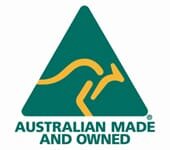 Airlines in the United States are still mainly fueled by petroleum based fuels, which puts them in several difficult positions. The cost of fuel has increased to such an extent that it makes air travel for commercial travelers very expensive. The carbon emissions and the cost of fuel create a controversy around which airlines must successfully navigate, no pun intended. In addition to this, in order to keep ecologically sensitive customers, airlines must implement other eco friendly methods, which will lessen their petroleum based profile in the eyes of regular flyers. What are some of the things U.S. airlines are doing?
Airlines in the United States are still mainly fueled by petroleum based fuels, which puts them in several difficult positions. The cost of fuel has increased to such an extent that it makes air travel for commercial travelers very expensive. The carbon emissions and the cost of fuel create a controversy around which airlines must successfully navigate, no pun intended. In addition to this, in order to keep ecologically sensitive customers, airlines must implement other eco friendly methods, which will lessen their petroleum based profile in the eyes of regular flyers. What are some of the things U.S. airlines are doing?
Ticketless Confirmation. In the past, tickets, especially large plastic non-biodegradable tickets, were used to board planes. Boarding passes were printed, tickets were given at the counter, and it was a long and complicated process, which inevitably produced quite a bit of carbon waste. Today, rather than creating lots of paper waste, airlines like Southwest Airlines are emailing ticketless confirmations to customers which allow passengers to print off their boarding pass at home, take to the airline and not need to use any other form of paperwork besides a valid photo identification to board their plane.
Biodegradable in-Flight Products. During transportation, drinks, food and napkins are frequently distributed to passengers, and disposable products are used in the bathrooms, in the cockpit, and as part of safety procedures. Flight safety information cards and pamphlets need replacing regularly. During flight, reading company specific or mass produced magazines is an easy pastime to keep busy while on lengthy flights. Obviously, a lot of plastic, paper and metal are consumed on a daily basis and this must be monitored and products must be bought in such a way as to protect the planet, support eco friendly companies, and be biodegradable. After all, airlines have reputations to protect.
Global airlines have more to plan and protect than local airlines. They must follow guidelines set down by different national interests and they must have exact procedures for dealing with international issues and global problems. When planning eco friendly airline operations, every detail is crucial. Every detail is important and is a part of the process of protecting our earth. Envirosafe Solutions has perfected the art of covering every detail when we designed our eco friendly degreasers, sterilizers and rust removers. Call us today: (+61) 1300 88 90 70.
Sources:
http://www.globalbasecamps.com/blog/virgin-america-awarded-most-eco-friendly-airline
http://www.terracurve.com/2010/05/28/which-airline-is-most-eco-friendly/

































